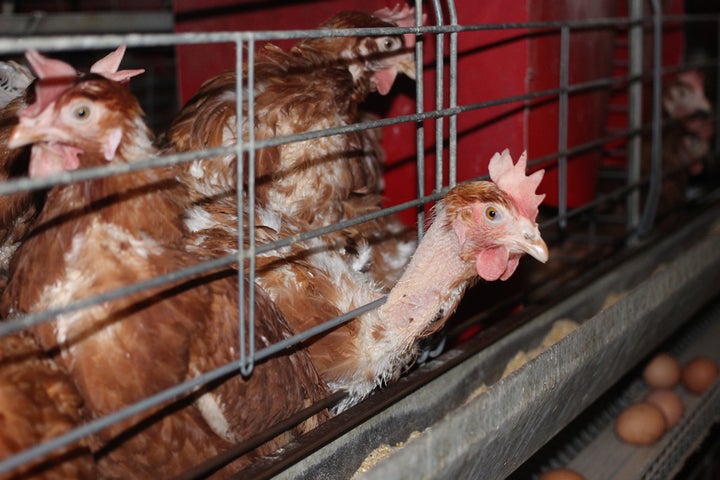
One day, in the not too distant future, we will look back on the practice of confining farm animals in cages and ask ourselves how society ever allowed that to happen – how did we ever permit such cruelty to become normal?
Progress has been slow but sure. Over the last decade we’ve seen the banning of systems such as the veal crate and the battery cage in the UK and the EU.
Over the past two or three years incredible progress has been made towards ending the caging of hens in the so-called enriched cages that many producers adopted when battery cages were banned, rather than moving to more humane free-range or barn systems.
I’m proud of the role that Compassion in World Farming has played in convincing companies all around the world to respond to public concern by committing to using 100% cage-free eggs by 2025. Amongst their number are Burger King, Starbucks, Unilever, Whole Foods, Marriott, Heinz, Nestle, Sodexo and all of the UK’s major supermarkets.
How depressing in the face of all this progress to have to be battling with Defra’s Chief Vet, Nigel Gibbens, who is lamenting retailer action to stop selling caged eggs because of the “threat from bird flu”.
The suggestion that keeping hens indoors will protect them from bird flu presupposes that wild birds mainly spread bird flu. However, in December 2016 the Scientific Task Force on Avian Influenza and Wild Birds advised that this is not the case, stating: “Typically, highly pathogenic avian influenza (HPAI) outbreaks are associated with intensive domestic poultry production and associated trade and marketing systems”.
I would agree that in some cases free-range hens are best brought indoors until an outbreak of bird flu has ended. However, that is very different from saying that, to combat bird flu, it may be better for hens to be kept indoors throughout their lives.
The so-called enriched cages that the Chief Vet says “have a lot going for them” provide hens with slightly more space than the now-banned battery cage. They contain some rudimentary features meant to mimic things that hens need, like a nest. In truth, they are little better than barren battery cages. No hen I’ve ever encountered would choose to live in such conditions. For example, the height of the cages is too low to allow hens to perform normal movements such as head-stretching, wing flapping and body shaking.
I keep hens and spend a lot of time watching them – they are amazingly busy birds! They are always foraging, always on the look out for something fresh and tasty to eat. They love variety. If hens could build their own house, it would have at least three bedrooms and a spacious garden. A big garden would be a must – only then can a hen really feel she is exploring. To top it all, a hen needs a spot that catches the sun, for relaxing after eating. When they bask in the rays of the sun, hens take on a whole new look, their eyes bulge and their wings spread. You can see the pleasure it brings them.
Thankfully, there’s been an outcry in response to the Chief Vet’s comments.
If the UK Government is to be seen to respect animal sentience post-Brexit, as it has promised to do, it should take action to ban the use of all caged confinement of farm animals.
Thank goodness that businesses act faster than governments and how grateful we are to the companies taking action to end the cage age.
